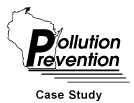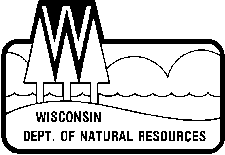
Artistic Plating Company
Reduce toxicity of wastewater sludge and effluent
- Reduction in the total metals emitted to the environment.
- Recovery of these metals in a reusable form.
- Reuse of the treated water.
In 1991, APC commissioned the design and installation of an ion-exchange system for tertiary polishing pretreatment of its wastewater effluent prior to discharge to the POTW. The system selectively removes heavy metals (nickel, zinc, copper, silver, cadmium, lead, chromium) by an order of magnitude below the categorical limits established under the Clean Water Act. Another ion exchange system was developed to remove silver-cyanide complexes prior to traditional wastewater treatment.
First, all cyanide-based metal strips were totally eliminated and replaced with acid-based formulations. Second, cyanide-based process baths were replaced with non-cyanide alkaline plating solutions. This resulted in a reduction of the toxicity and easier chemical treatment of the effluent. Silver metal cyanide complexes were selectively removed prior to traditional wastewater treatment with an innovative system that combines electrowinning and ionic exchange techniques. This process provides for near complete recovery of silver.
Feedstock
- cyanide based strips
- cyanide based process baths
- silver cyanide contaminated rinse water treated by alkaline chlorination followed by metal hydroxide precipitation and discharge to local POTW
- wastewater from secondary pre-treatment system discharged to local POTW
Waste
- spent cyanide contaminated/complexed metal strip solutions
- cyanide contaminated wastewater sludge
- silver and cyanide contaminated wastewater sludge
- metals-bearing wastewater discharged below allowable permit levels to the local POTW (based on an average daily system flow of 11,300 gallons per day prior to process installation the annual estimated metals discharged to the local POTW was 39.4 pounds/year)
Disposal
- off-site shipment for incineration
- off-site shipment for incineration, followed by landfill
- permitted discharge to local POTW
- permitted discharge to local POTW
Pollution Prevention Process
Feedstock
- non-cyanide based, acid strips
- alkaline-based non-cyanide plating bath solution
- silver cyanide contaminated rinse waters primary pre-treated first by electrowinning and ion exchange, followed by secondary pre-treatment using cyanide oxidation and chemical precipitation
- water from secondary pre-treatment system discharged to POTW after treatment with ion exchange prior to discharge
Waste
- spent non-cyanide/un-complexed metal strip solutions
- spent alkaline-based non-cyanide plating bath solution
- discharge to local POTW
- after installation of the tertiary wastewater (ion exchange system) the discharge is estimated to be 7.09 pounds. This is an 82% reduction in metals released to the environment on an annual basis via the discharge to the local POTW
Disposal
- off-site shipment of sludge (after in-house treatment for metals reclaim/recycle)
- off-site shipment of sludge after in-house treatment for metals reclamation/recycling.
- silver metal sent off-site for reclamation/recycling
- discharge to local POTW
- $134,000 Purchase and installation of an ion exchange system designed to remove metal ions from the wastewater discharged to the local POTW facility.
- $5000 Purchase of an electrolytic metal recovery machine for silver (electrowinning).
- $15,000 Purchase of a ion exchange system designed to remove complexed silver cyanide metal ions from the wastewater.
Operation/Maintenance Costs
- $15,400/year for additional labor and replacement parts.
- $9,000/year is required for annual operating costs for replacement of ion exchange resin and upkeep labor.
Payback Period
Not calculated.
405 West Cherry Street
Milwaukee, Wisconsin 53212
414/271-8138
William A. Campbell, Environmental Manager
414/271-8138
University of Wisconsin Extension
Solid and Hazardous Waste Education Center
Milwaukee area: 414/475-2845
Remainder of state: 608/262-0385
Waste Reduction and
Cooperative Environmental Assistance Publication Order Form
Wisconsin Department of Natural Resources
Bureau of Cooperative Environmental Assistance
608/267-9700
 |
PUBL TS-045 96 |